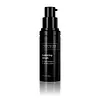What's inside
What's inside
 Key Ingredients
Key Ingredients

 Benefits
Benefits

 Concerns
Concerns

No concerns
 Ingredients Side-by-side
Ingredients Side-by-side

Water
Skin ConditioningGlycerin
HumectantBiosaccharide Gum-1
HumectantSodium Hyaluronate
HumectantPalmitoyl Tripeptide-5
Skin ConditioningChondrus Crispus Extract
Skin ConditioningGlyceryl Polyacrylate
Honey
HumectantHydrolyzed Hazelnut Protein
Skin ConditioningPunica Granatum Extract
AstringentTocopheryl Acetate
AntioxidantMacrocystis Pyrifera Extract
Skin ConditioningCitrullus Lanatus Fruit Extract
Skin ConditioningLens Esculenta Fruit Extract
Skin ConditioningPyrus Malus Fruit Extract
Skin ConditioningButylene Glycol
HumectantSodium Lactate
BufferingSodium PCA
HumectantPolysorbate 20
EmulsifyingLeuconostoc/Radish Root Ferment Filtrate
AntimicrobialEthylhexylglycerin
Skin ConditioningSodium Polyacrylate
AbsorbentPhenoxyethanol
PreservativeCitric Acid
BufferingWater, Glycerin, Biosaccharide Gum-1, Sodium Hyaluronate, Palmitoyl Tripeptide-5, Chondrus Crispus Extract, Glyceryl Polyacrylate, Honey, Hydrolyzed Hazelnut Protein, Punica Granatum Extract, Tocopheryl Acetate, Macrocystis Pyrifera Extract, Citrullus Lanatus Fruit Extract, Lens Esculenta Fruit Extract, Pyrus Malus Fruit Extract, Butylene Glycol, Sodium Lactate, Sodium PCA, Polysorbate 20, Leuconostoc/Radish Root Ferment Filtrate, Ethylhexylglycerin, Sodium Polyacrylate, Phenoxyethanol, Citric Acid
Water
Skin ConditioningSilt
AbsorbentBentonite
AbsorbentKaolin
AbrasiveGlycerin
HumectantLauryl Lactate
EmollientGalactoarabinan
Jojoba Esters
EmollientC12-15 Alkyl Benzoate
AntimicrobialGlyceryl Stearate
EmollientDimethicone
EmollientSorbitan Stearate
EmulsifyingCetearyl Alcohol
EmollientPEG-100 Stearate
Cetyl Esters
EmollientSteareth-20
CleansingAvena Sativa Kernel Extract
AbrasiveSalvia Officinalis Leaf Extract
CleansingHydroxyethyl Acrylate/Sodium Acryloyldimethyl Taurate Copolymer
Emulsion StabilisingCamellia Oleifera Leaf Extract
AstringentMelaleuca Alternifolia Leaf Oil
AntioxidantTocopherol
AntioxidantSalicylic Acid
MaskingZea Mays Starch
AbsorbentCucumis Sativus Fruit Extract
EmollientCocamidopropyl Dimethylamine
EmulsifyingButylene Glycol
HumectantIron Oxides
Bisabolol
MaskingHydrolyzed Corn Starch
HumectantTriethoxycaprylylsilane
Squalane
EmollientTetrasodium EDTA
Xanthan Gum
EmulsifyingMentha Arvensis Leaf Oil
MaskingPhenoxyethanol
PreservativePolysorbate 60
EmulsifyingSteareth-10
EmulsifyingHydrolyzed Corn Starch Octenylsuccinate
AbsorbentChlorphenesin
AntimicrobialBenzoic Acid
MaskingSorbic Acid
PreservativeHydrated Silica
AbrasiveParfum
MaskingWater, Silt, Bentonite, Kaolin, Glycerin, Lauryl Lactate, Galactoarabinan, Jojoba Esters, C12-15 Alkyl Benzoate, Glyceryl Stearate, Dimethicone, Sorbitan Stearate, Cetearyl Alcohol, PEG-100 Stearate, Cetyl Esters, Steareth-20, Avena Sativa Kernel Extract, Salvia Officinalis Leaf Extract, Hydroxyethyl Acrylate/Sodium Acryloyldimethyl Taurate Copolymer, Camellia Oleifera Leaf Extract, Melaleuca Alternifolia Leaf Oil, Tocopherol, Salicylic Acid, Zea Mays Starch, Cucumis Sativus Fruit Extract, Cocamidopropyl Dimethylamine, Butylene Glycol, Iron Oxides, Bisabolol, Hydrolyzed Corn Starch, Triethoxycaprylylsilane, Squalane, Tetrasodium EDTA, Xanthan Gum, Mentha Arvensis Leaf Oil, Phenoxyethanol, Polysorbate 60, Steareth-10, Hydrolyzed Corn Starch Octenylsuccinate, Chlorphenesin, Benzoic Acid, Sorbic Acid, Hydrated Silica, Parfum
Ingredients Explained
These ingredients are found in both products.
Ingredients higher up in an ingredient list are typically present in a larger amount.
Butylene Glycol (or BG) is used within cosmetic products for a few different reasons:
Overall, Butylene Glycol is a safe and well-rounded ingredient that works well with other ingredients.
Though this ingredient works well with most skin types, some people with sensitive skin may experience a reaction such as allergic rashes, closed comedones, or itchiness.
Learn more about Butylene GlycolGlycerin is already naturally found in your skin. It helps moisturize and protect your skin.
A study from 2016 found glycerin to be more effective as a humectant than AHAs and hyaluronic acid.
As a humectant, it helps the skin stay hydrated by pulling moisture to your skin. The low molecular weight of glycerin allows it to pull moisture into the deeper layers of your skin.
Hydrated skin improves your skin barrier; Your skin barrier helps protect against irritants and bacteria.
Glycerin has also been found to have antimicrobial and antiviral properties. Due to these properties, glycerin is often used in wound and burn treatments.
In cosmetics, glycerin is usually derived from plants such as soybean or palm. However, it can also be sourced from animals, such as tallow or animal fat.
This ingredient is organic, colorless, odorless, and non-toxic.
Glycerin is the name for this ingredient in American English. British English uses Glycerol/Glycerine.
Learn more about GlycerinPhenoxyethanol is a preservative that has germicide, antimicrobial, and aromatic properties. Studies show that phenoxyethanol can prevent microbial growth. By itself, it has a scent that is similar to that of a rose.
It's often used in formulations along with Caprylyl Glycol to preserve the shelf life of products.
Water. It's the most common cosmetic ingredient of all. You'll usually see it at the top of ingredient lists, meaning that it makes up the largest part of the product.
So why is it so popular? Water most often acts as a solvent - this means that it helps dissolve other ingredients into the formulation.
You'll also recognize water as that liquid we all need to stay alive. If you see this, drink a glass of water. Stay hydrated!
Learn more about Water